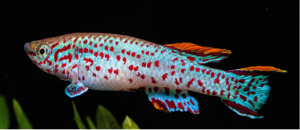
BioTechniques News
Beatrice Bowlby

Newly identified precursor to NAD+ could be the key to novel interventions for sarcopenia, the muscle-wasting condition associated with aging.
A collaborative international research effort, led by Vincenzo Sorrentino and Jerome Feige (Nestlé Institute of Health Sciences, Lausanne, Switzerland), has identified a molecule that is vital to the production of NAD+, an essential co-enzyme in the respiratory pathway. This molecule, trigonelline, was shown to have potential for the treatment of sarcopenia, addressing the need to improve the health span of aging populations.
Sarcopenia is characterized by decreased muscle mass, strength and physical independence as a result of the cellular impacts of aging. Key hallmarks of the condition are the gradual loss of NAD+ and mitochondrial dysfunction, as identified by the 2019 multi-ethnic molecular determinants of sarcopenia (MEMOSA) study. However, the mechanism and factors driving these hallmarks have yet to be fully elucidated. As such, it remains unclear if this process can be impacted by external factors such as diet, or if it is entirely driven by cellular changes associated with aging.
To answer this question, the team conducted a suite of experiments in humans, mice and the worm Caenorhabditis elegans (C. elegans). For the human studies, the team examined muscle biopsy samples taken from healthy controls and sarcopenia patients participating in the MEMOSA study. RNA sequencing of total RNA was conducted on these samples using an Illumina HiSeq 2500 sequencer with a depth of over 75 million reads per sample.
 Could African killifish hold the key to reversing muscle aging?
Could African killifish hold the key to reversing muscle aging?
Researchers have discovered that a newly emerged animal model could hold the key to reversing muscle aging.
Analysis of these results revealed that sarcopenia was associated with lower levels of trigonelline, an alkaloid present in many plants and animals. Coupled with further explorations of the MEMOSA samples and data from other cohorts, the team was able to demonstrate that trigonelline levels were positively associated with muscle mass, muscle function, grip strength and gait speed and higher levels of NAD+ in skeletal muscle.
To confirm that trigonelline is a precursor that composes part of the NAD+ molecule, the team infused mice with trigonelline molecules labeled with a 13C and three deuterium (2H) atoms. This administration was found to increase the overall levels of native NAD+ in the mice, alongside levels of 13C -labeled NAD+, confirming the role of trigonelline as a precursor to NAD+. Studies involving the supplementation of C. elegans with trigonelline revealed that the molecule extended their lifespan, reducing muscle wasting while aiding their mitochondrial respiration.
Commenting on the results, Sorrentino stated that “the discovery of trigonelline as a novel NAD+ precursor” could “increase the potential of establishing interventions with NAD+ – producing vitamins for both healthy longevity and age-associated diseases applications.” Although the study found that variation in the consumption of dietary sources of trigonelline, such as coffee and fenugreek seeds, did not seem to impact the levels of the molecule circulating in the blood, by better understanding these pathways and the molecules involved, our chances of developing an intervention to increase somatic NAD+ and stave off sarcopenia could have dramatically improved.
The post Scientists stymie sarcopenia appeared first on BioTechniques.
Powered by WPeMatico
